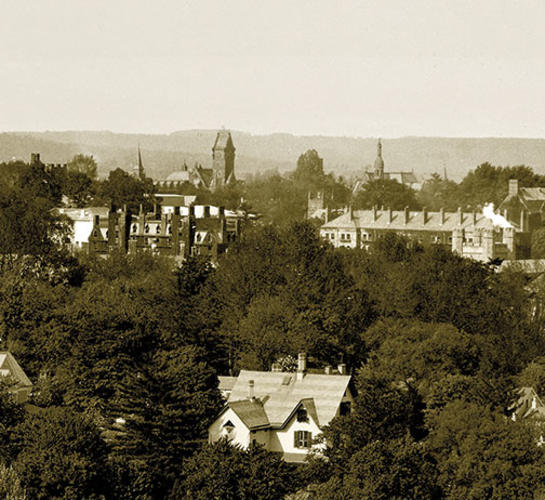
Viewing a Century of Change
A hundred years ago, Princeton University had about 1,400 students, 170 faculty members, and a small staff. There were fewer than 60 buildings. Today, the University population is nearly nine times bigger, and buildings have tripled to 180. In the first panorama, taken in 1913, Princeton’s surroundings are entirely rural; the second image, taken last fall, shows the modern buildings that have replaced fields and pushed the campus in all directions. Mercer County is three times more populous than it was when Cleveland Tower was built, and suburbs now stretch to the horizon. The tower’s giddy heights have attracted countless visitors, including the undergraduate Edmund Wilson 1916, later a famous literary critic. He admired “the strange miscellany of buildings which makes Princeton; the gray Gothic of Campbell, Little, Blair, and the rest was nearly lost among the older and more obtrusive vagaries of our earliest architects.”











No responses yet